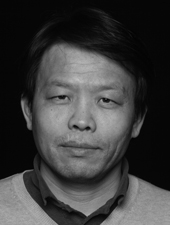Xiao, X., Deng, H., Furlan, A., Yang, T., Zhang, X., Hwang, G. R., Tucciarone, J., Wu, P., He, M., Palaniswamy, R., Ramakrishnan, C., Ritola, K., Hantman, A., Deisseroth, K., Osten, P., Huang, Z. J., Li, B.
(October 2020)
A Genetically Defined Compartmentalized Striatal Direct Pathway for Negative Reinforcement.
Cell, 183 (1).
211-227.e20.
ISSN 0092-8674
Abstract
The striosome compartment within the dorsal striatum has been implicated in reinforcement learning and regulation of motivation, but how striosomal neurons contribute to these functions remains elusive. Here, we show that a genetically identified striosomal population, which expresses the Teashirt family zinc finger 1 (Tshz1) and belongs to the direct pathway, drives negative reinforcement and is essential for aversive learning in mice. Contrasting a "conventional" striosomal direct pathway, the Tshz1 neurons cause aversion, movement suppression, and negative reinforcement once activated, and they receive a distinct set of synaptic inputs. These neurons are predominantly excited by punishment rather than reward and represent the anticipation of punishment or the motivation for avoidance. Furthermore, inhibiting these neurons impairs punishment-based learning without affecting reward learning or movement. These results establish a major role of striosomal neurons in behaviors reinforced by punishment and moreover uncover functions of the direct pathway unaccounted for in classic models.
| Item Type: |
Paper
|
| Additional Information: |
1097-4172
Xiao, Xiong
Deng, Hanfei
Furlan, Alessandro
Yang, Tao
Zhang, Xian
Hwang, Ga-Ram
Tucciarone, Jason
Wu, Priscilla
He, Miao
Palaniswamy, Ramesh
Ramakrishnan, Charu
Ritola, Kimberly
Hantman, Adam
Deisseroth, Karl
Osten, Pavel
Huang, Z Josh
Li, Bo
Journal Article
United States
Cell. 2020 Oct 1;183(1):211-227.e20. doi: 10.1016/j.cell.2020.08.032. Epub 2020 Sep 15. |
| Subjects: |
bioinformatics
bioinformatics > genomics and proteomics > genetics & nucleic acid processing
bioinformatics > genomics and proteomics
bioinformatics > genomics and proteomics > genetics & nucleic acid processing > protein structure, function, modification
organism description > animal
organism description > animal behavior
organs, tissues, organelles, cell types and functions > tissues types and functions > basal ganglia
bioinformatics > genomics and proteomics > genetics & nucleic acid processing > protein structure, function, modification > protein types > homeodomain protein
organism description > animal behavior > learning
organism description > animal > mammal
organism description > animal > mammal > rodent > mouse
organs, tissues, organelles, cell types and functions
bioinformatics > genomics and proteomics > genetics & nucleic acid processing > protein structure, function, modification > protein types
organism description > animal > mammal > rodent
organs, tissues, organelles, cell types and functions > tissues types and functions |
| CSHL Authors: |

Li, Bo
Huang, Z. Josh
Osten, Pavel
Xiao, Xiong
Deng, Hanfei
Furlan, Alessandro
Yang, Tao
Zhang, Xian
Hwang, Ga-Ram
Tucciarone, Jason
Wu, Priscilla
Palaniswamy, Ramesh
|
| Communities: |
CSHL labs > Huang lab
CSHL labs > Li lab
CSHL labs > Osten lab
CSHL Post Doctoral Fellows |
| Depositing User: |
Matthew Dunn
|
| Date: |
1 October 2020 |
| Date Deposited: |
11 Jan 2021 21:44 |
| Last Modified: |
06 Nov 2025 20:47 |
| PMCID: |
PMC8605319 |
| Related URLs: |
|
| URI: |
https://repository.cshl.edu/id/eprint/39888 |
Actions (login required)
 |
Administrator's edit/view item |












